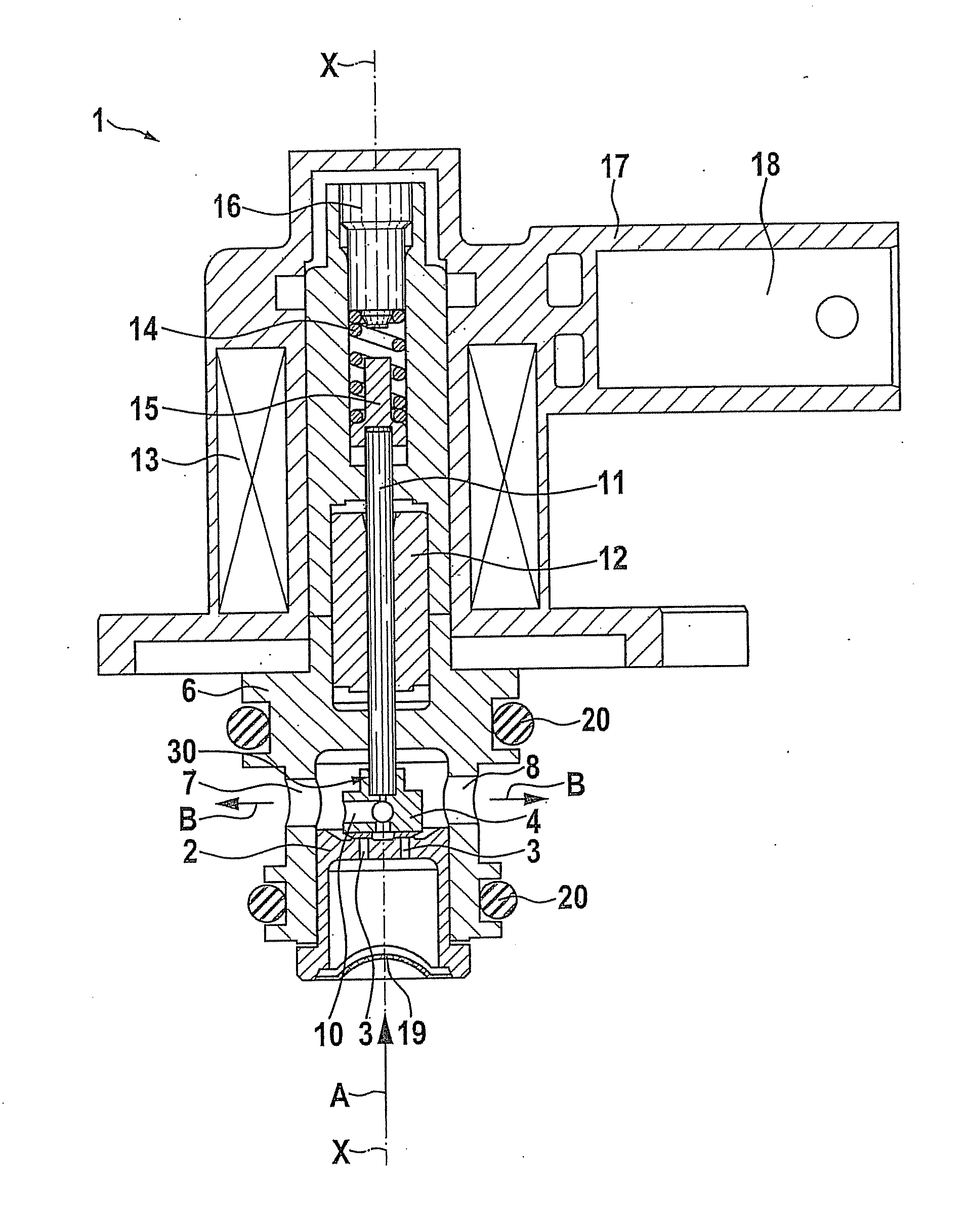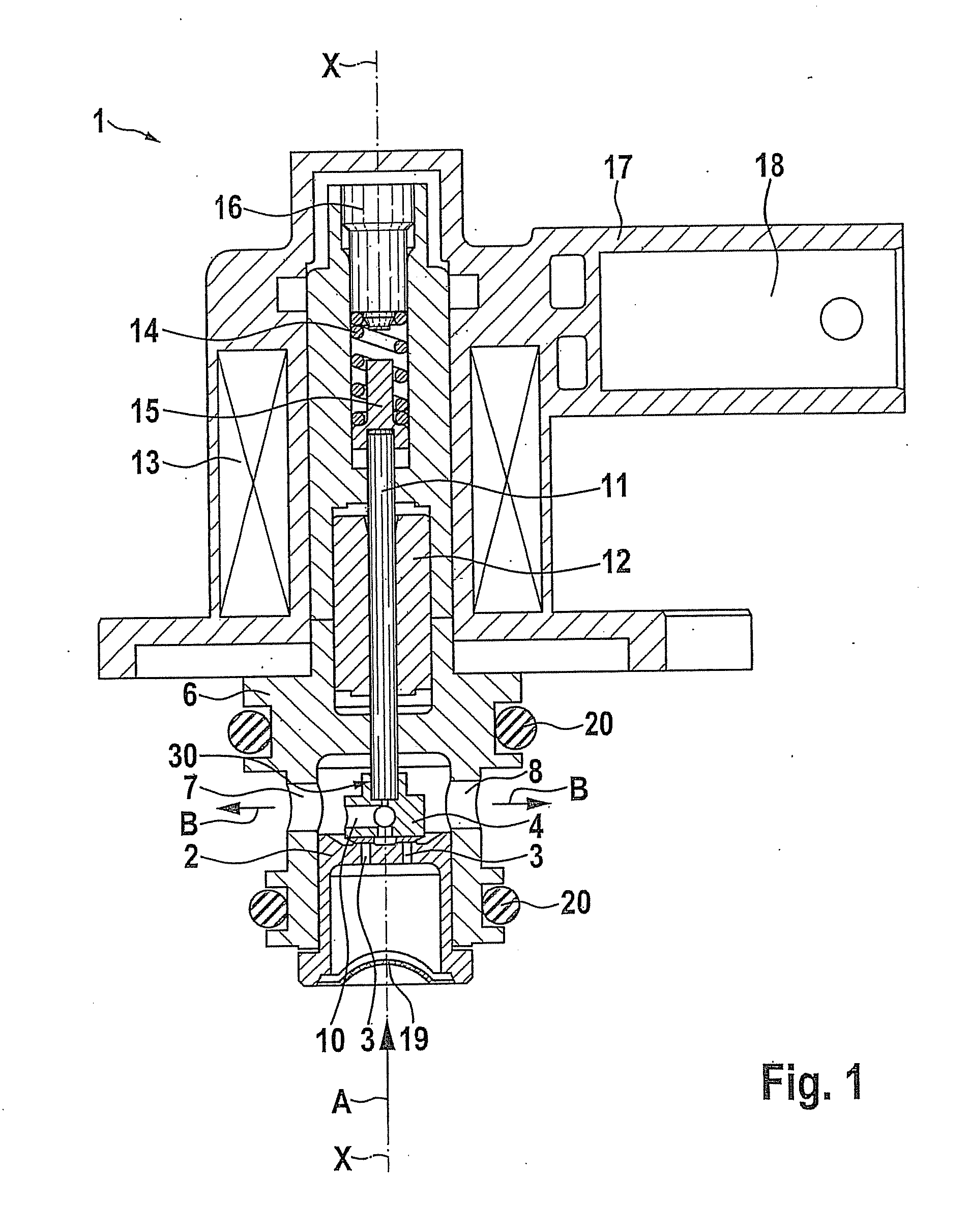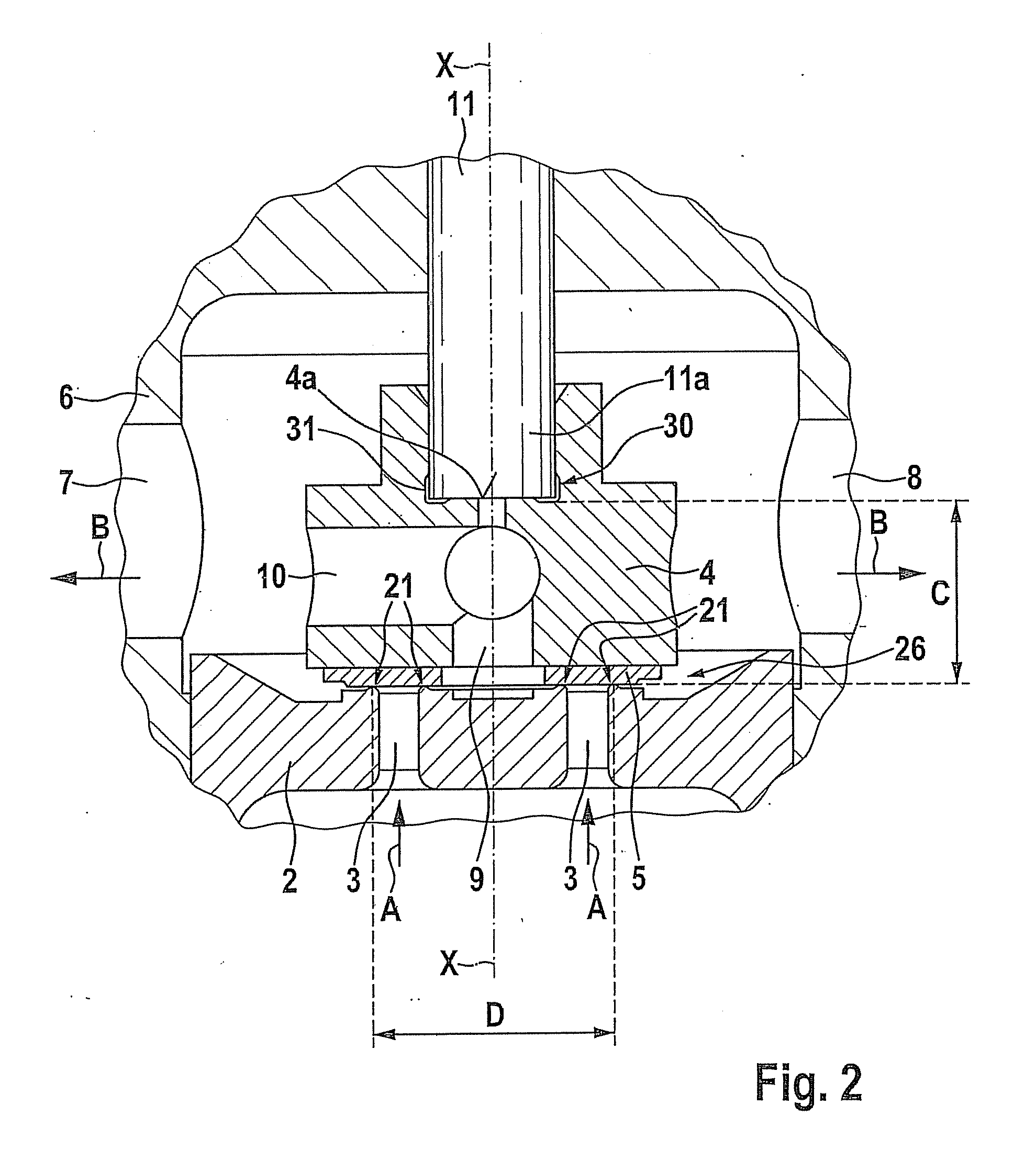Proportional valve having an improved sealing seat
a technology of proportional valves and sealing seats, which is applied in the direction of valve housings, valve operating means/release devices, machines/engines, etc., can solve the problems of unwanted leakage, inability to improve the seal on the valve seat, and inability to leakage, so as to improve the tightness of the valve seat, improve the sealing effect, and improve the sealing
- Summary
- Abstract
- Description
- Claims
- Application Information
AI Technical Summary
Benefits of technology
Problems solved by technology
Method used
Image
Examples
Embodiment Construction
[0025]A proportional valve 1 for controlling a gaseous medium is described in detail below with reference to FIGS. 1 and 2. Proportional valve 1 illustrated in the figures is used to control gaseous hydrogen which is supplied, for example, to a fuel cell in a vehicle.
[0026]As is shown in FIG. 1, proportional valve 1 includes a valve housing 6 which has a magnet armature 12, a solenoid coil 13 and a pin 11 which is connected to magnet armature 12. A closing spring 14 is connected to pin 11 via a spring holder 15. Reference numeral 16 identifies an adjusting bolt for adjusting a restoring force of closing spring 14. Solenoid coil 13 is fixed in a plastic overmold 17 on valve housing 6. A plug connector 18 is provided on the side of proportional valve 1. A closing element 4 is situated on pin-shaped end 11a of pin 11, which is located opposite closing spring 14. Closing element 4 closes pass-through openings 3 which are provided in a nozzle body 2. Pass-through openings 3 are situated ...
PUM
| Property | Measurement | Unit |
|---|---|---|
| distance | aaaaa | aaaaa |
| diameter | aaaaa | aaaaa |
| distance | aaaaa | aaaaa |
Abstract
Description
Claims
Application Information
 Login to View More
Login to View More - R&D
- Intellectual Property
- Life Sciences
- Materials
- Tech Scout
- Unparalleled Data Quality
- Higher Quality Content
- 60% Fewer Hallucinations
Browse by: Latest US Patents, China's latest patents, Technical Efficacy Thesaurus, Application Domain, Technology Topic, Popular Technical Reports.
© 2025 PatSnap. All rights reserved.Legal|Privacy policy|Modern Slavery Act Transparency Statement|Sitemap|About US| Contact US: help@patsnap.com



